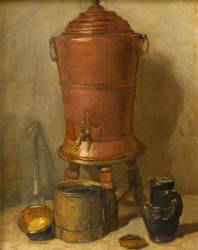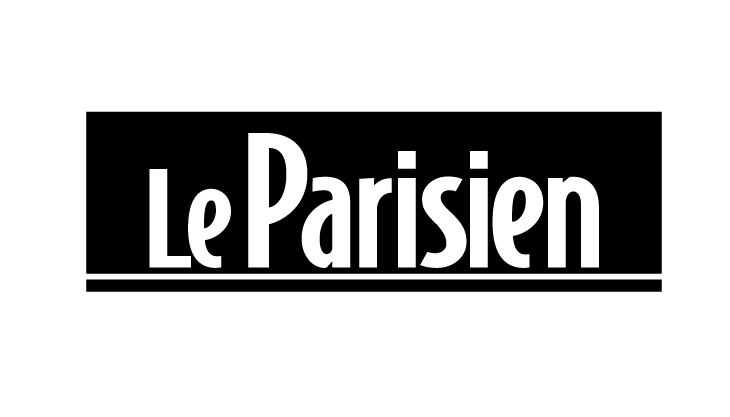Baroque Painting
Baroque painting is an artistic style that had a profound impact on the history of art in Europe, flourishing mainly during the 17th and early 18th centuries. Originating in Italy, particularly in Rome, as a reaction to the rigour of the late Renaissance and Mannerism, the Baroque style is characterised by its exuberance, dynamism and emotional intensity. Baroque artists sought to impress, move and persuade the viewer. This style was particularly powerful in religious painting, exalting faith and figures of saints, but also found its way into mythological scenes, portraits and, to a certain extent, still life.
Enhance your interior with the power and timeless splendour of the Baroque paintings offered by Muzeo. Each painting is an invitation to travel back to an era of artistic effervescence, reproduced with the utmost fidelity and quality. Adding a Baroque painting to your wall décor means choosing a piece with character that tells a story and enriches your space with a dramatic and elegant touch. Let the grandeur of Baroque art, with its genius artists such as Caravaggio and Rubens, transform your interior. Our canvas reproductions are more than just decoration, they are a piece of art history brought to life in your home.
Immerse yourself in Baroque painting: emotion, grandeur and light
Baroque art is a complex and diverse artistic movement that flourished in Europe from the late 16th century to the mid-18th century. This style, which influenced painting, sculpture, architecture and music, has its roots in Italy, particularly in Rome, against the backdrop of the Catholic Counter-Reformation. The Catholic Church, seeking to reaffirm its power and splendour in the face of the Protestant Reformation, commissioned many Baroque works of art to stir emotion and religious fervour among the faithful. As a result, many paintings and sculptures depict dramatic biblical scenes, martyrdoms of saints or ecstatic visions, intended to adorn churches and palaces. The Baroque style is distinguished by its taste for the grandiose, the spectacular and the emotional, breaking with the harmony and balance of the classical Renaissance.
The undisputed masters of Baroque painting and their immortal works
Several artists embodied the genius of Baroque painting, leaving behind works that continue to influence and amaze. In Italy, Michelangelo Merisi, known as Caravaggio (1571-1610), is considered one of the pioneers. His revolutionary use of chiaroscuro, or tenebrism, gives his paintings a dramatic intensity and striking realism, as in The Calling of Saint Matthew or David and Goliath. His powerful images had a lasting impact on his contemporaries and subsequent generations of painters. Also in Italy, figures such as Bernini, although better known for his sculpture and architecture, also influenced the Baroque aesthetic as a whole.
In Flanders, Peter Paul Rubens (1577-1640) was the other giant of Baroque painting. His works, such as The Raising of the Cross and the series of paintings for the Luxembourg Palace in Paris, are characterised by their dynamism, shimmering colours and exuberant composition. Rubens was equally adept at religious and mythological subjects and portraits. In the Netherlands, although the Protestant context favoured a more intimate art, masters such as Rembrandt van Rijn (1606-1669) and Johannes Vermeer (1632-1675) developed a unique style imbued with the Baroque spirit. Rembrandt, with works such as The Night Watch, explored the psychology of his characters through his subtle use of light. Vermeer, meanwhile, excelled in intimate genre scenes bathed in soft, poetic light, as in Girl with a Pearl Earring.
Spain was also a major centre of Baroque painting, with artists such as Diego Velázquez (1599-1660), court painter to King Philip IV, whose portraits and court scenes, such as Las Meninas, are of unrivalled virtuosity and psychological depth. Francisco de Zurbarán (1598-1664) is famous for his intense religious paintings and his still lifes of mystical sobriety, often intended for monasteries in Seville. Bartolomé Esteban Murillo (1617-1682), also active in Seville, is known for his gentler religious scenes and his depictions of street children. Other notable Spanish painters of this period include Francisco Ribalta (1565-1628), a precursor of tenebrism in Spain, Juan de Pareja (1606-1670), a freed slave and assistant to Velázquez who became a recognised painter in his own right, Juan de Arellano (1614-1676), a specialist in flower paintings, and Francisco Barrera (c. 1595-1658), known for his still lifes. The influence of these masters was felt throughout Europe. Their works can be found in the world's greatest museums, and numerous books analyse their style and influence.
Essential works of Baroque painting
Baroque painting, a pinnacle of the arts, transformed artistic vision. Caravaggio, who worked in Rome, produced striking paintings such as The Calling of Saint Matthew (1599-1600, Church of San Luigi dei Francesi, Rome). His realism, evident in his Fruit Basket (circa 1599, Pinacoteca Ambrosiana, Milan), had a lasting impact on still life painting due to its fidelity to the objects depicted. Caravaggio also produced his David with the Head of Goliath around 1610 (Galleria Borghese, Rome).
Pierre Paul Rubens, master of Flemish art, displayed unique energy in The Raising of the Cross (1610-1611, Cathedral of Our Lady, Antwerp) and The Descent from the Cross (1612-1614, Cathedral of Our Lady, Antwerp). Peter Paul Rubens also painted The Horrors of War (1637-1638, Palazzo Pitti, Florence). Peter Paul Rubens' influence was colossal, as shown in The Straw Hat (circa 1622-1625, National Gallery, London).
Rembrandt van Rijn excelled with his chiaroscuro in The Night Watch (1642, Rijksmuseum, Amsterdam) and The Anatomy Lesson of Dr. Tulp (1632, Mauritshuis, The Hague), pillars of classical painting. Rembrandt van Rijn's paintings, such as Bathsheba at the Bath with David's Letter (1654, Louvre Museum, Paris), are iconic. Another masterpiece by Rembrandt van Rijn is The Syndics of the Drapers' Guild, painted in 1662, and a jewel of the Rijksmuseum in Amsterdam.
Even Bernini, the famous sculptor, painted his Self-Portrait (circa 1623, Galleria Borghese, Rome) in an undeniably Baroque style.
These works by Peter Paul Rubens, Rembrandt van Rijn and Bernini, among others, define classical painting and are often seen in museums around the world, but also in churches, as is the case with Caravaggio's Madonna of the Pilgrims (1604-1605, Basilica of Sant'Agostino, Rome).
The symbolism and aesthetic code of the Baroque
Beyond their visual impact, Baroque paintings convey a complex message using a rich symbolic code. In religious works, every detail, from the posture of a saint to the objects surrounding them, can have theological significance. Vanitas paintings, a subgenre of still life particularly popular during the Baroque period, remind us of the transience of life and the futility of earthly pleasures through symbols such as skulls, hourglasses and extinguished candles.
The dramatic use of light is not only aesthetic; it guides the viewer's gaze and highlights key elements of the narrative, creating an effect that is sometimes almost starry in the treatment of dark backgrounds from which the light bursts forth. Baroque art thus aims to instruct and move, and understanding this visual code enriches the appreciation of each painting and each work.
Incorporate the majesty of Baroque painting into your wall decor
Choosing a reproduction of a Baroque painting for your wall decor is a bold artistic statement. With their dynamism and rich colours, these works can become the focal point of a room. A large Baroque-style painting, depicting a mythological scene by Rubens or an intense portrait by Velázquez, will add a touch of sophistication and grandeur worthy of a palace. Caravaggio's paintings, with their striking chiaroscuro, are ideal for creating an intimate and theatrical atmosphere. Even a smaller work, such as a still life by Francisco de Zurbarán or a genre scene by Vermeer, will add historical and artistic depth to your interior.
At Muzeo, we understand the importance of quality in ensuring that these masterpieces reveal their full splendour. Our canvas reproductions are made with exceptional attention to detail, respecting the original colours and textures. Each frame is chosen to enhance the painting and blend harmoniously with your décor. Unlike a simple poster found on a general website or elsewhere, a Muzeo reproduction is a true work of art, an investment in beauty and history. The influence of such a work in a space is immediate, transforming the atmosphere and stimulating conversation. Baroque artists created powerful images, and our reproductions allow you to appreciate their strength every day. This artistic movement, although born several centuries ago, continues to inspire and fascinate, and our paintings offer you a window into this extraordinary era of European art.















































































































































